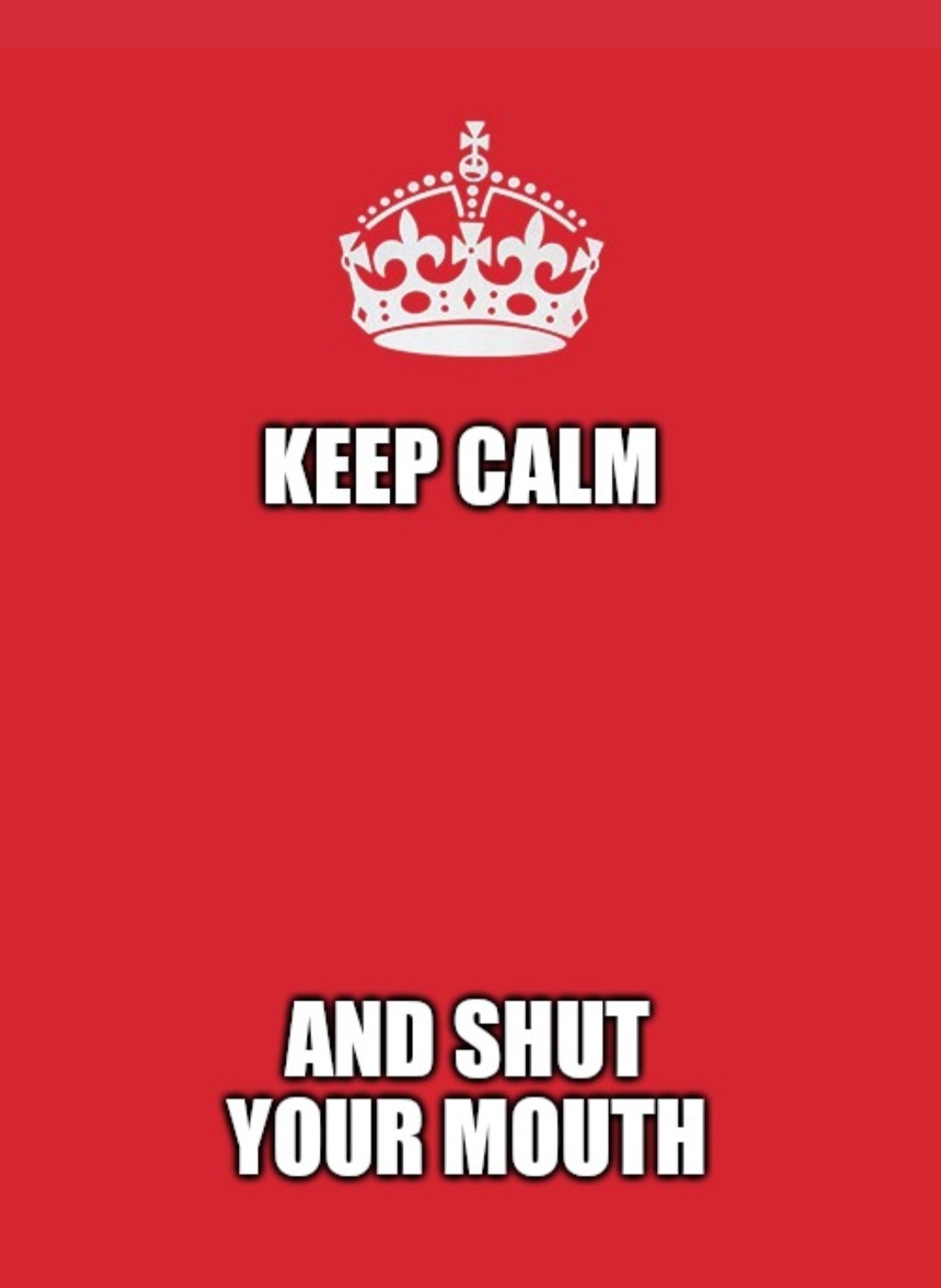
It should ideally be shut your mouth, and keep calm, but then, the meme would get dismembered.
This is about mouth breathing and mouth breathers( and how they’re unable to keep calm)
The nose, the back of the mouth (oropharynx), the windpipe (pharynx) and the lungs (with the airways in them) take and give inputs to each other to produce optimal breathing
You would have learnt in school (if you’d be paying attention) that the nose filters air borne particles, that it humidifies and temperature controls the air that you take in, that it helps you detect strange odours and protects you from getting poisoned.
What they didn’t teach you in school is what else it does. And that’s what I hope to to in this post.
Nasal breathing
- Helps you recruit the diaphragm better during breathing
- Provides a stimulus for nitric oxide release from the endothelium, which helps dilate blood vessels and therefore improves tissue perfusion
- Slows down exhalation and helps you retain carbon dioxide. Yes, that can be a good thing.
- Prevents your upper airway from drying out. A dry mouth leads to faster tooth decay and gingival infections
Diaphragmatic breathing
- Gets air to the lower parts of the lung, which are areas which have better blood flow, therefore more efficient in oxygenation and removal of carbon dioxide
- Triggers the vagus nerve, improving your parasympathetic tone ( the repair, regeneration and relaxation side of your autonomic nervous system)
- Improves posture
- Helps stabilise the spine better during movement and loading
- Increases lung volume, which increases airway stiffness through stretching/tension, which prevents narrowing during inhalation. This has a major role to play in asthma, and obstructive sleep apnoea
- Calming effect, which is probably mediated through the vagus and the nitric oxide , which makes your focus and mood better
Nitric oxide
- Dilates blood vessels to let more nutrients and oxygen reach tissues
- Drop blood pressure naturally
Carbon dioxide retention
- Also helps dilate blood vessels
- Makes RBCs bind less tightly to the oxygen they’re carrying, therefore helping the body release more oxygen where it is needed the most (in areas of high CO2 concentration, that’s called the Bohr effect( again, your lack of attention in biology class is showing)
- Carbon dioxide levels give your brainstem, the most important reason to make you breathe.
I’d like to add an extra note on carbon dioxide. As a 6 year old learning that oxygen is “good” and carbon dioxide is “bad” is useful. However, once you get older, it is also useful to discard that sort of childish thinking and look at the big picture. Poison, is in the dose. And sometimes poisons are beneficial. Oxygen can be toxic, Carbon dioxide can be essential. Welcome to the real world.
Anyway, that’s enough theory for today. How do you apply this in real life?
I’ve divided the situations into 3
- At rest and asleep
- At rest and awake
- Active and exercising
The easiest one to fix is category 2.
Just keep your mouth shut and breathe through your nose.
Special, life threatening conditions like a cold or a blocked nose will be dealt with in another post.
Category 1.
Is the one that makes the most difference in health and longevity. Mouth breathing at night, makes you more prone to sleep apnoea, which makes you more prone to diabetes, dementia, hypertension, obesity (yes, lack of sleep is an independent risk factor for obesity)
The solution, in addition to diet, lifestyle and exercise is mouth taping. Weird as it sounds, has shown lots of benefits. I have no personal experience with the same, so I’ll put up a post after I’ve tried it for myself.
Category 3
Nose breathing during exercise. This, I do have a lot of experience with, and I can guarantee an increase in athletic performance the longer you can stick to nasal breathing during an event.
This can be trained. Either by just keeping your mouth shut by force of will. Or you can use a technique that warriors tribes and civilisations have used in the past. Carry a mouthful of water during exercise. Do not drink it. Do not inhale it, for god’s sake. Just regulate the intensity of your effort in such a way that you don’t end up coughing or spluttering. This can be done during aerobic exercise, resistance training or even better, during martial arts training.
If you train and become better at breathing through your nose during physical exertion, you’ll always have an extra gear in a real life emergency situation where you can use mouth breathing to get you past an acute life or death situation.
The problem with using mouth breathing on a regular basis is that your body interprets it as being in a life or death situation all the time. That leads to anxiety, panic attacks, depression, poor digestion, poor stamina during an ordinary effort, cardiovascular disease, stress eating, the list is endless.
The amount of information given here is jaw dropping, I know, but get with the program, shut your mouth and breathe.